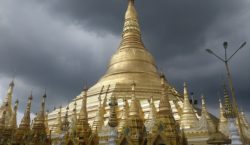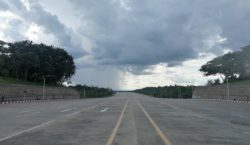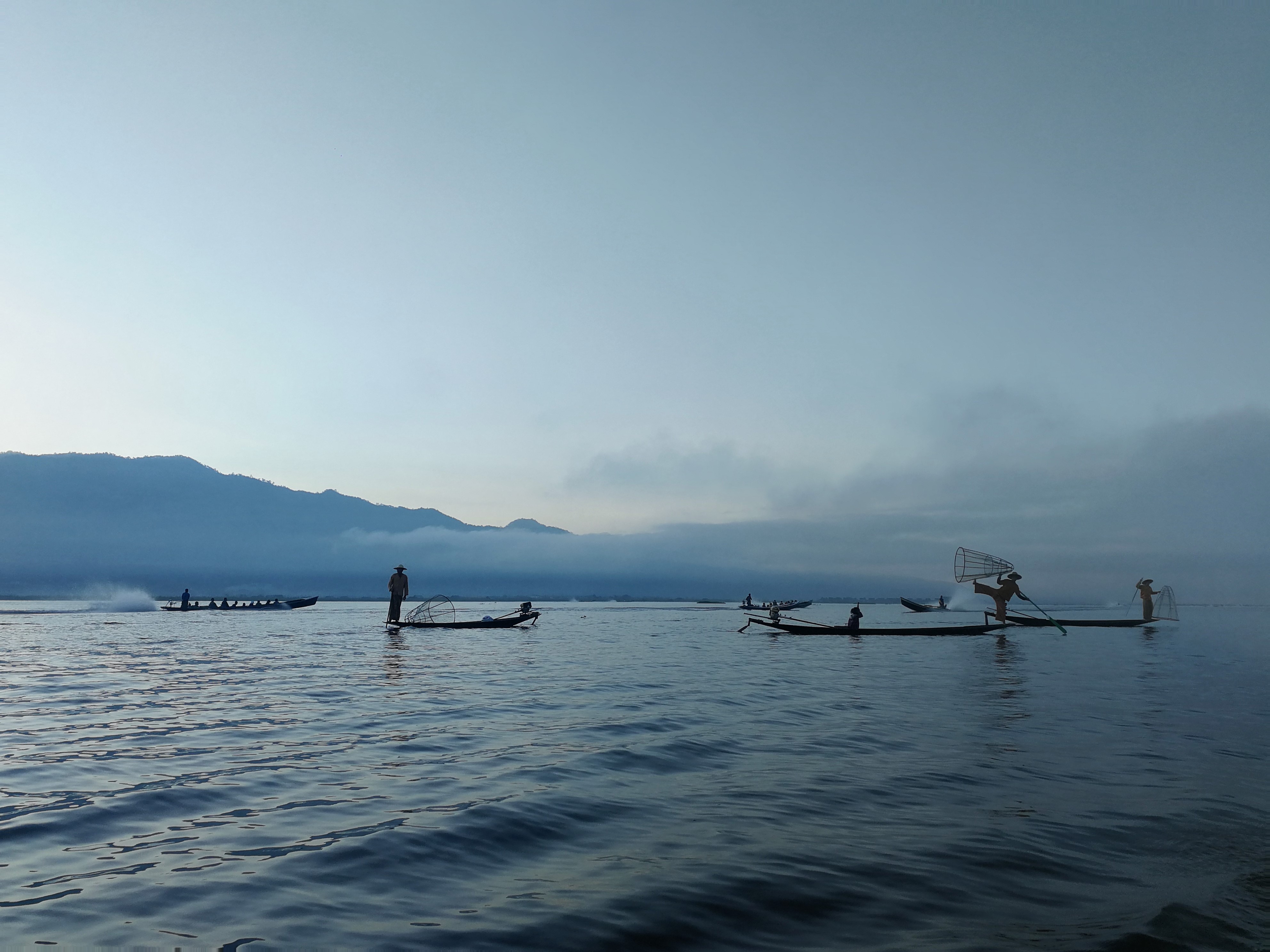
Countries undiscovered by average Joe and plain Jane are a rare site these globalised days. If you’re not up for paying countries like North Korea and Syria a visit, it can be quite the challenge to find a place that isn’t overrun by large tour groups following tour guides with umbrellas in the air like herds of sheep.
In 2011, Myanmar started opening up to the outside world making it easier to visit the large country as a tourist. Yet, here we are, eight years later, and the only umbrellas I saw was for the merciless sun and the occasional downpour.
Tourists are not overcrowding Myanmar. Essentially, this makes it a paradise for adventurous backpackers looking for an unexplored and cheap adventure before the country is spoiled by mainstream tourism.
There are also still areas where tourists can’t and shouldn’t go, though the country already has tourist hotspots. Whether you ask Google or other people you are likely to get two names when asking where to go: Bagan and Inle.
So, this is where I went.
How to Bagan
There are already a number of ways to get around in the densely populated parts of Myanmar, which also happen to be the places well-visited by the few tourists.
From Yangon, you can either fly, sail, take a bus, a train or a private car to Bagan. All buses and trains were sold out, due to a festival at the time of my visit. My travel companions and I therefore opt for the private car option, as we like to see stuff on the way as well as save a bit on our private CO2 emissions accounts.
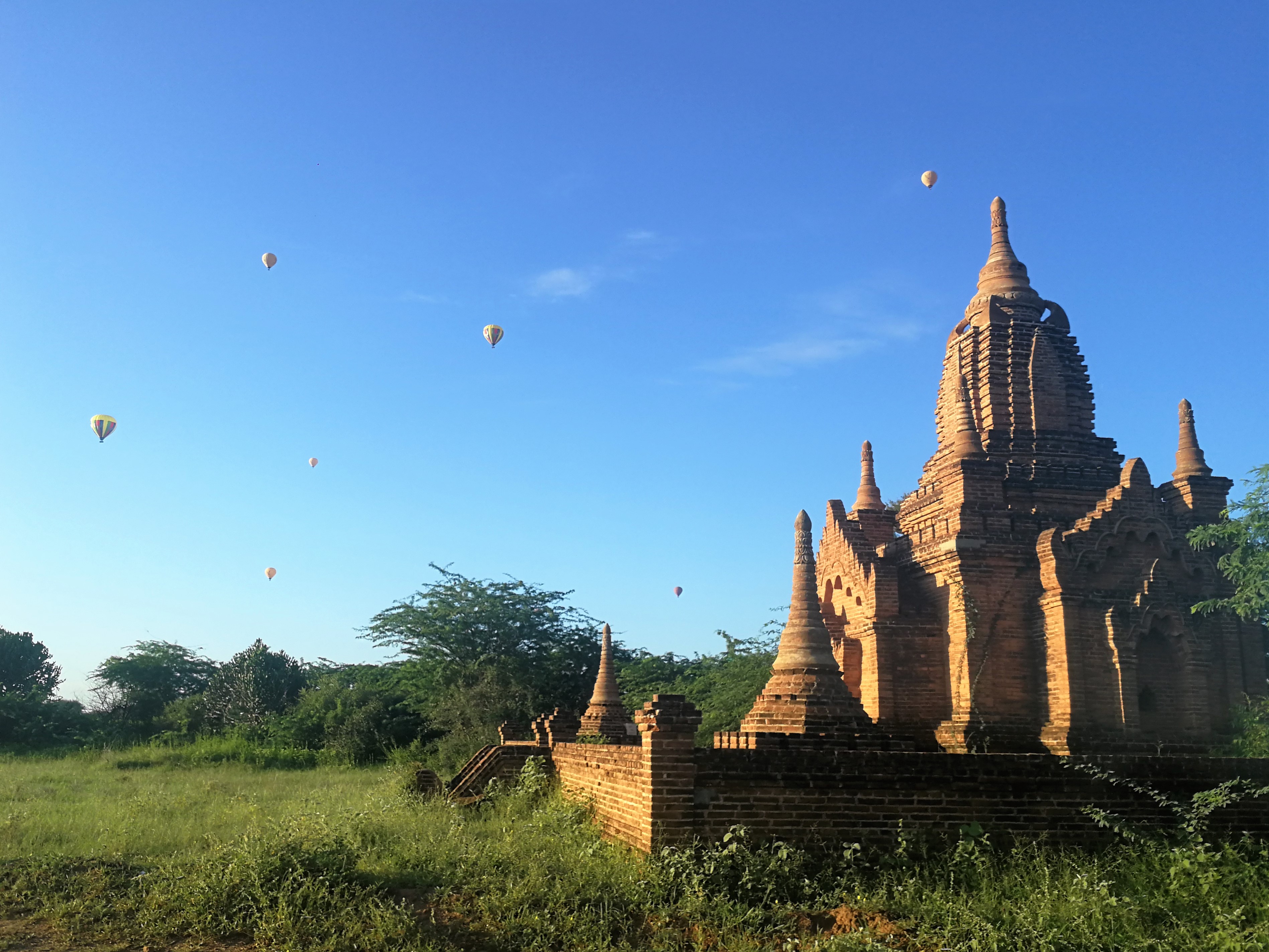
The drive to Bagan is not particularly scenic. The most thrills come from the tickling feeling of stomach drops when the bumpy roads are extraordinarily bumpy, having to swerve for cows and overtaking other cars as the driver sits in the right side and also drives on the right side (this is quite common in Myanmar, I discovered).
Upon arrival in Bagan, we tuck in early and set an alarm for 5am, optimistic that our sunrise prospects are better than the not so promising weather forecast predicts.
Because for a not so touristy country, Bagan already has a quite well-paved tourist path. The guide on how to Bagan includes: Sunrise, temple-visiting by electrical scooter and sunset.
Rise and shine
Bagan is an old city and a UNESCO World Heritage Site. There is an old and a newer city centre as well as an endless number of temples and pagodas in between. About 10,000 temples, pagodas and monasteries were built from the 11th to the 13th century in the area. Though many of them have been destroyed throughout time, about 2,000 remain in the 104 square kilometres large area.
Needless to say, it’s more than one can visit in a day. Or in a week for that matter.
We make a notable attempt at fitting as much in a day as humanly possible.
Waking up before the sun does help on this plan and we head for the entrance to the recommended viewing point.
25,000 MMK (15 Euros) and a photo for digital use later, we are allowed to enter. We’re herded to a small hill to join the hundreds of other tourists, whom have also read that the sunrise is a must-see when visiting Bagan.
Back to the car and chase another place with fewer tourists.
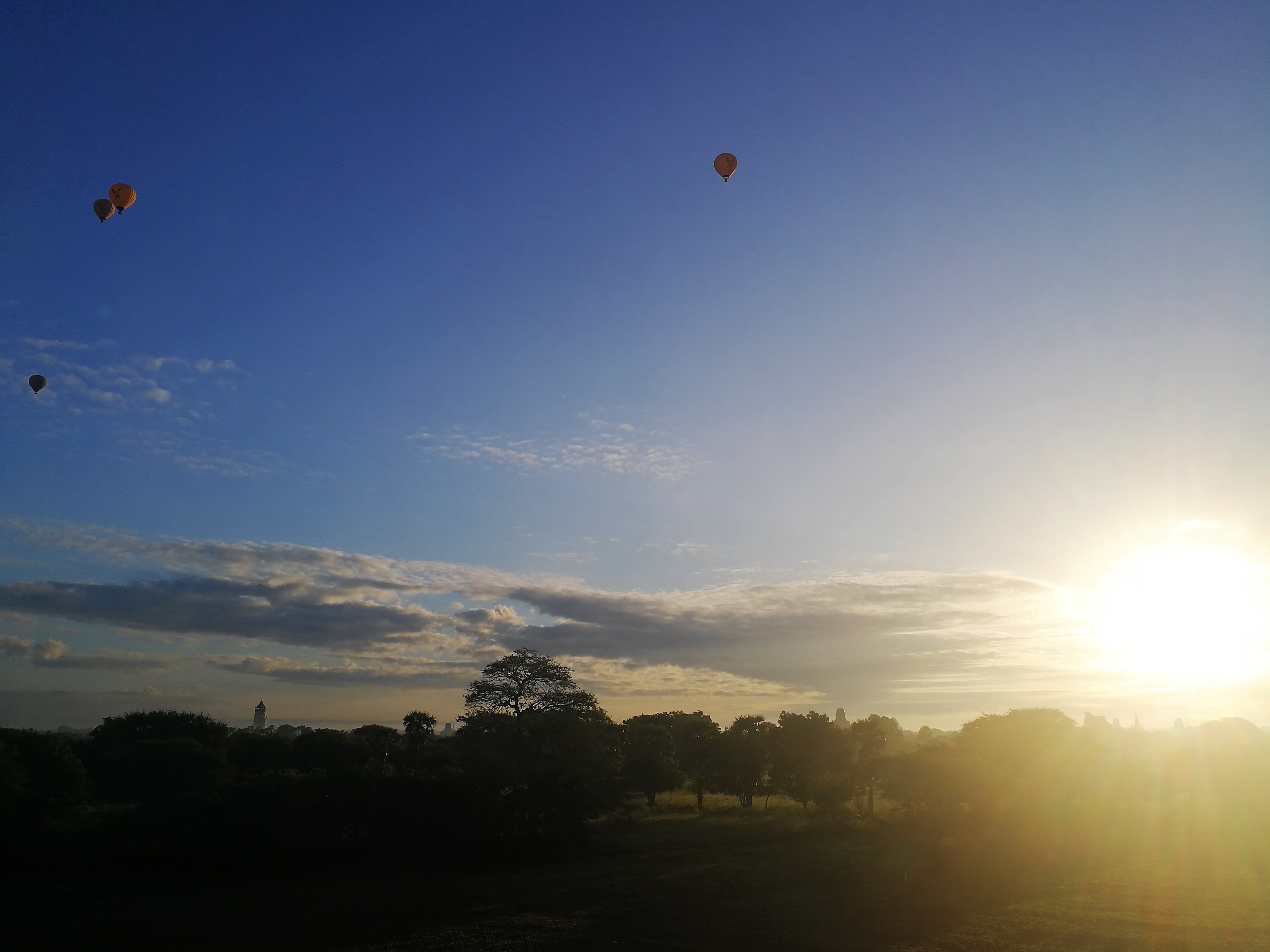
We find a spot that appears to be unnoticed by tour groups. Backpackers on the other hand must have read about the place somewhere, because the average age of the 15 other people reveals that the spot is most likely advertised on some travel blog.
As the sun rises, we thank the tourists who have splurged on a hot air balloon, so we can get the mandatory photos of the flying objects floating over the temples with the orange sun breaking the horizon in the background.
Cruising all day
Back at the hotel, we quickly change into our conservative Buddhist temple-visiting outfits, covering our shoulders and ankles. Then we rent electrical scooters for the remainder of the day to drive around the town of Bagan and the narrow dirt roads among the temples outside the city.
Though it seems like every single tourist is at the temples of either Thatbyinnyu or Ananda, they are both worth the visit. Here, it’s also possible to buy new flip flops, if yours happen to break as well. And you can stock up on water and snacks for the day.
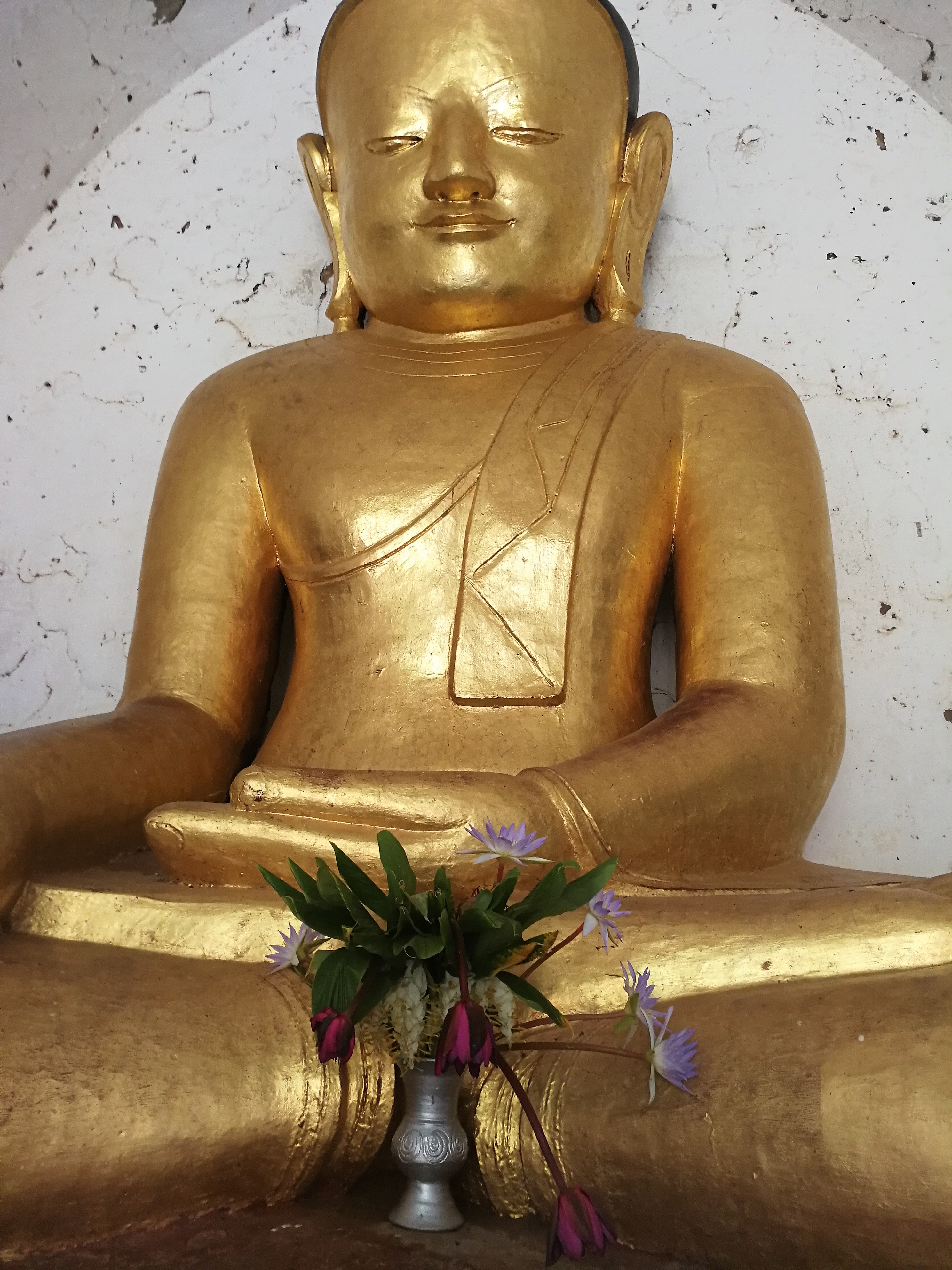
Most of the temples are mainly spectacular from the outside, so they don’t take long to visit, if you just stroll by the Buddha figures inside.
After a full day of viewing stupas, temples and pagodas, I feel full on sacredness and a beautiful sunset makes for the perfect cherry on top of a long, hot day.
I understand why people spend several days in the area, but I do think it’s worth a visit even if you just have a short time.
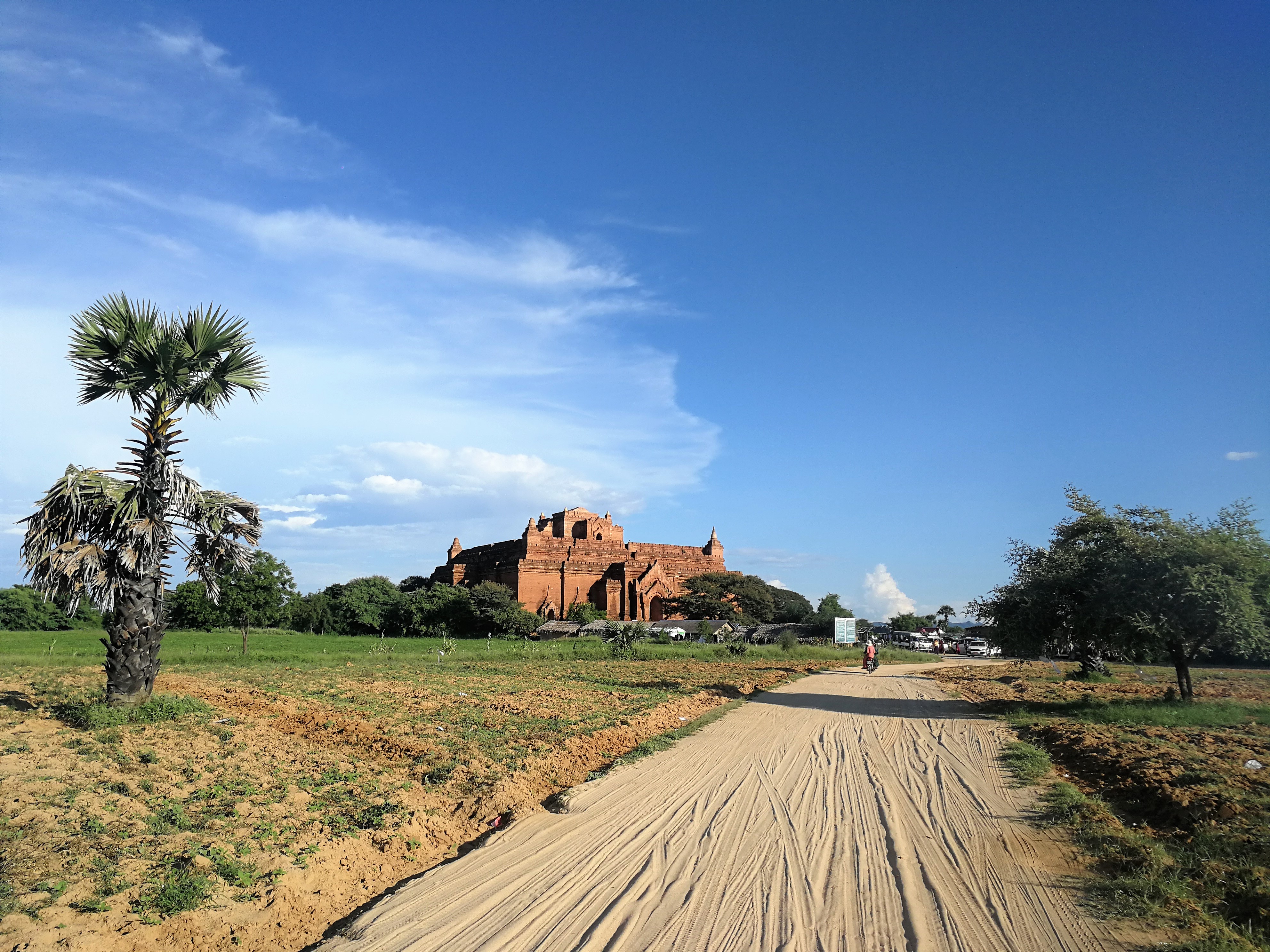
One of our electrical scooters did take its last breath of battery about 5 kilometres from the hotel. However, reaching a top speed of 40 kilometres an hour, they provide for a good and easy way to leave behind a lot of dry dirt road and sacred historical buildings. They also have a room under the seat, which is adequate for water, snacks and sunscreen.
From dry to wet
After driving most of the night, we arrive in Inle and wake up just in time for renting a boat to take us out on the lake for yet another sunrise.
As the sun starts peeping up behind the mountains, leg-rowing fishermen entertain tourists by posing with one leg on the boat and the other stretching a fishing net basket up in the air.
They request money for their balancing acts before we continue our way to a town in the middle of the lake. It consists of houses elevated on stilts.
Sailing down narrow “streets” between houses and under power lines hanging above the roofs, we pass restaurants, private homes and even a library. Boats make for buses transporting people around the floating city.
Apart from splashing calmly against the houses, the water unfortunately also makes for the neighbourhood dump. When I ask for a trash can at one of our stops, the answer is simply a finger pointing at the water surrounding the building.
That could help explain the indefinably brown colour of the water.
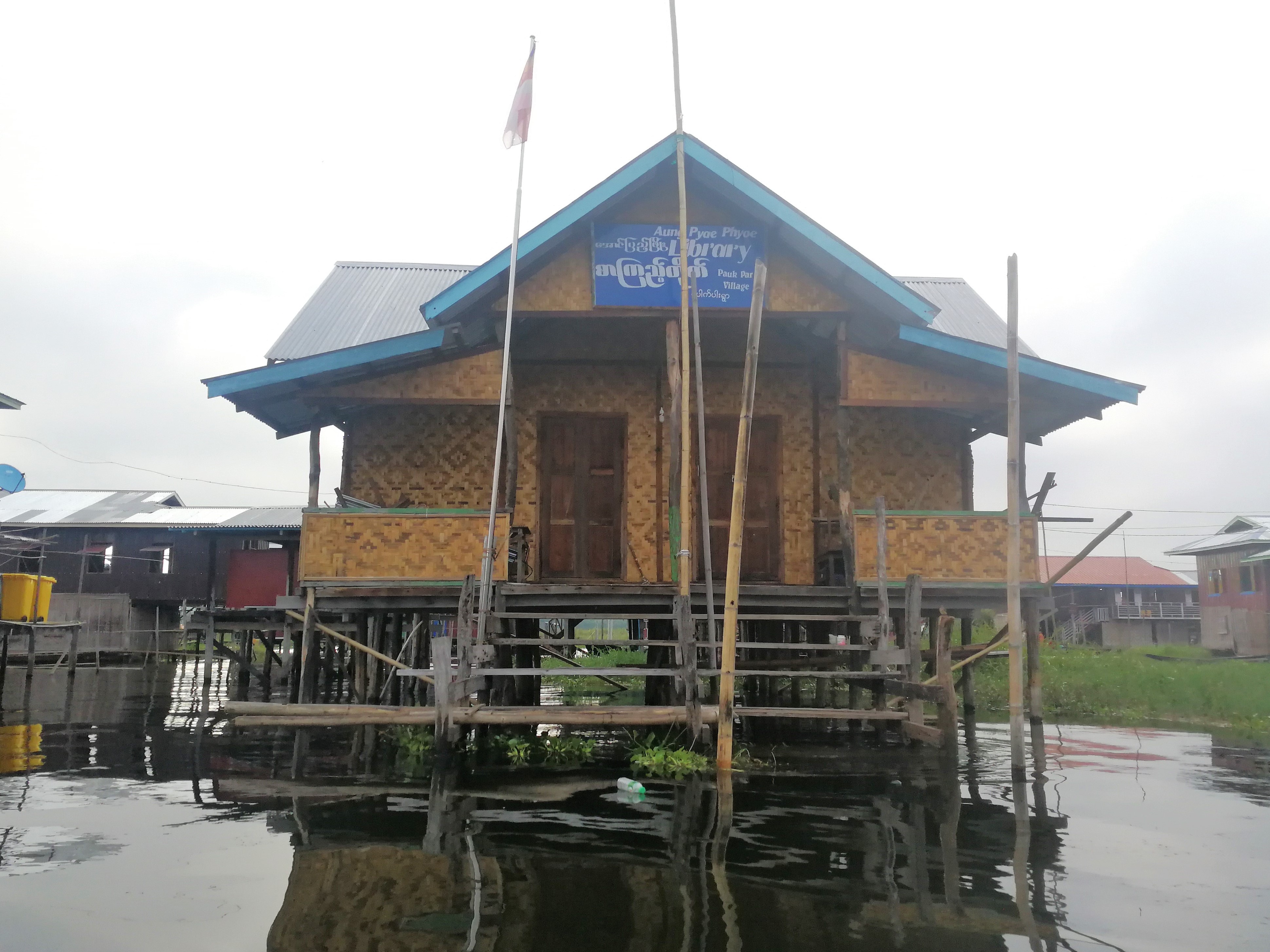
Our chauffeur and guide brings us to several places selling bamboo blouses, pants made from lotus, jewellery and other craftmanship. He most probably gets a percentage of whatever money the shop-owners convince us to spend.
Being in the middle of a lake and told to leave the boat at a shop, we don’t have much of a choice on where to go, though.
Long necks
After lunch at a floating restaurant, we are brought to Indein Village from where scooters transport us to Shwe Indein Pagoda, a complex consisting of 1054 stupas built in mainly the 17th and 18th centuries.
Though they are not all original, it’s an overwhelmingly stunning sight as the sun hits the golden constructions.
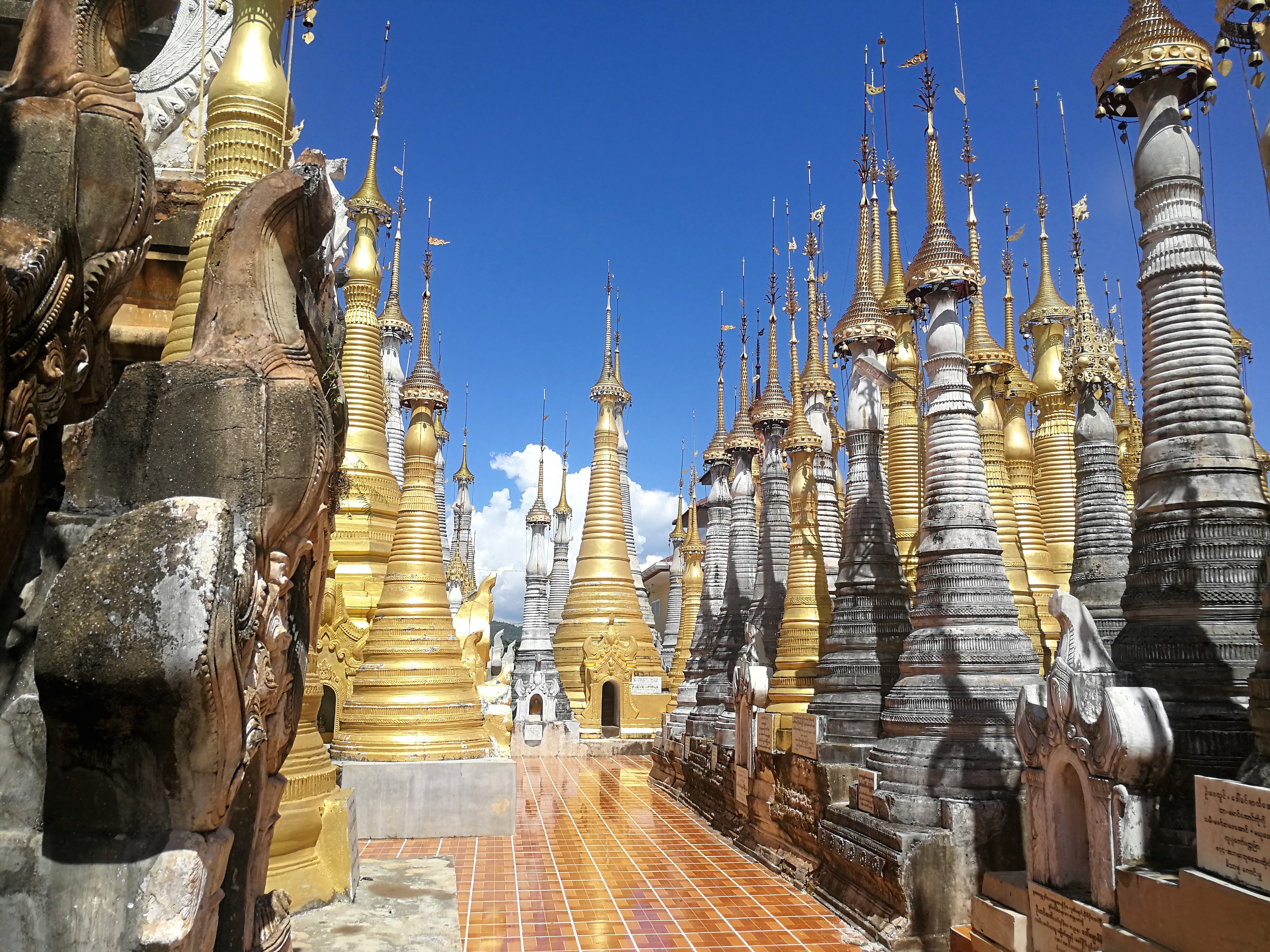
Careful not to get lost in the mace of stupas we return to the boat and are taken to our last stop before the end of the boat ride.
At that stop it’s also possible to buy jewellery, bags, scarfs and the like, but the main attraction is two women. They are so called long-necked women. They sit here all day long with a tower of golden rings around their necks. One of them making scarfs for people to buy, the other posing for pictures.
The latter looks like she’s 70 years old and though she smiles, it reminds me of watching an animal at the zoo. With 25 rings weighing a total of eight kilos, the woman can’t turn her neck, and one tourist after the other sits down next to her for a photo.
The tradition isn’t practiced anymore, and a sign explains that the rings were traditionally worn by women to protect against tiger attacks. At the age of nine girls would start wearing them, albeit much fewer than 25 to begin with. They also have rings just under the knees.
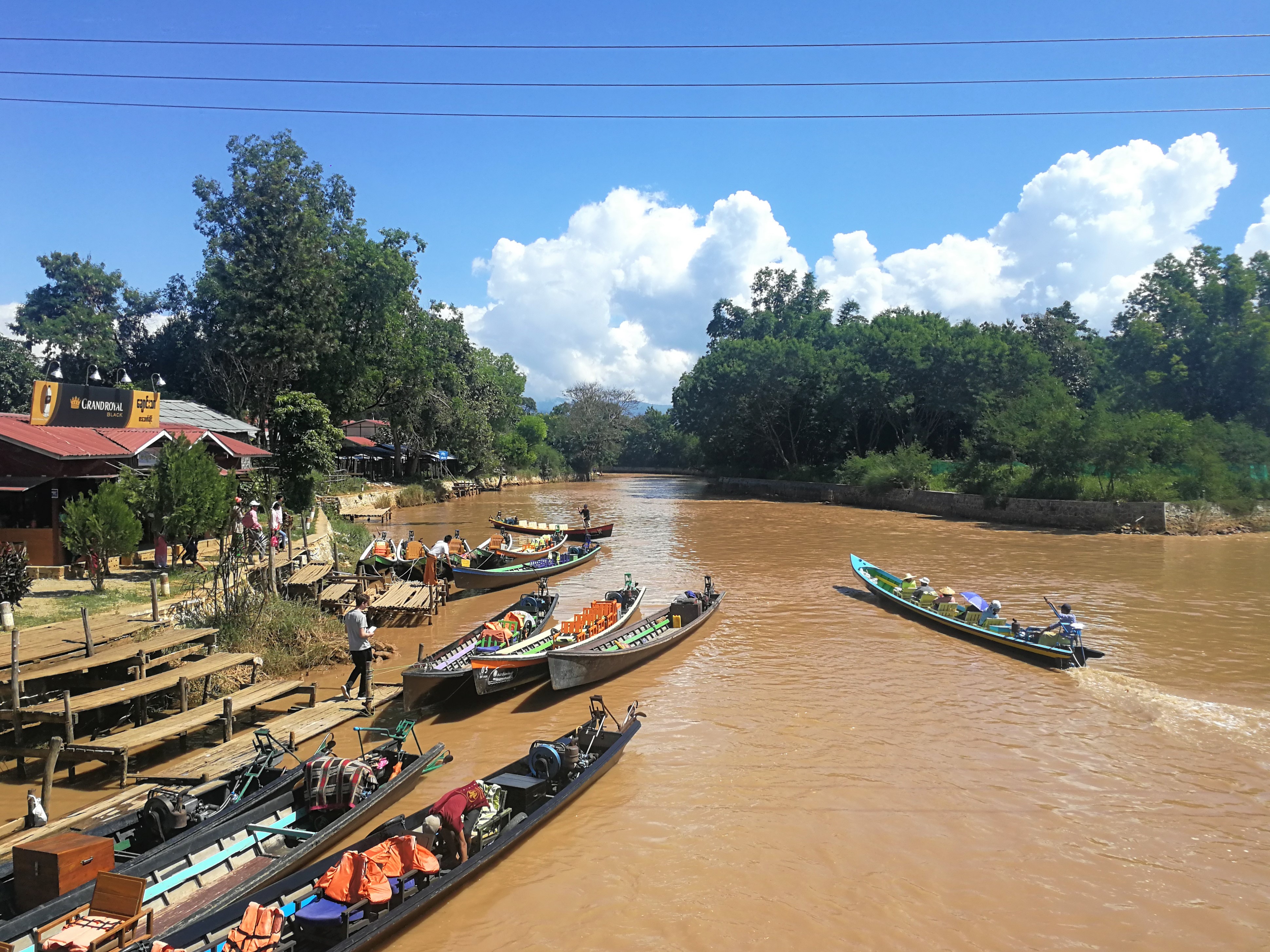
A scary ride
Sailing back to our car and driver we pass by a floating tomato garden in the middle of the lake. The bright green plants make for a beautiful contrast against the brown water and blue sky.
I feel thankful that we started the tour early and got the beautiful sunrise, as we pass several boats ready to start the tour. Many of the tourists hide from the merciless sun, and thus also the view, under umbrellas, unaware of what they are missing.
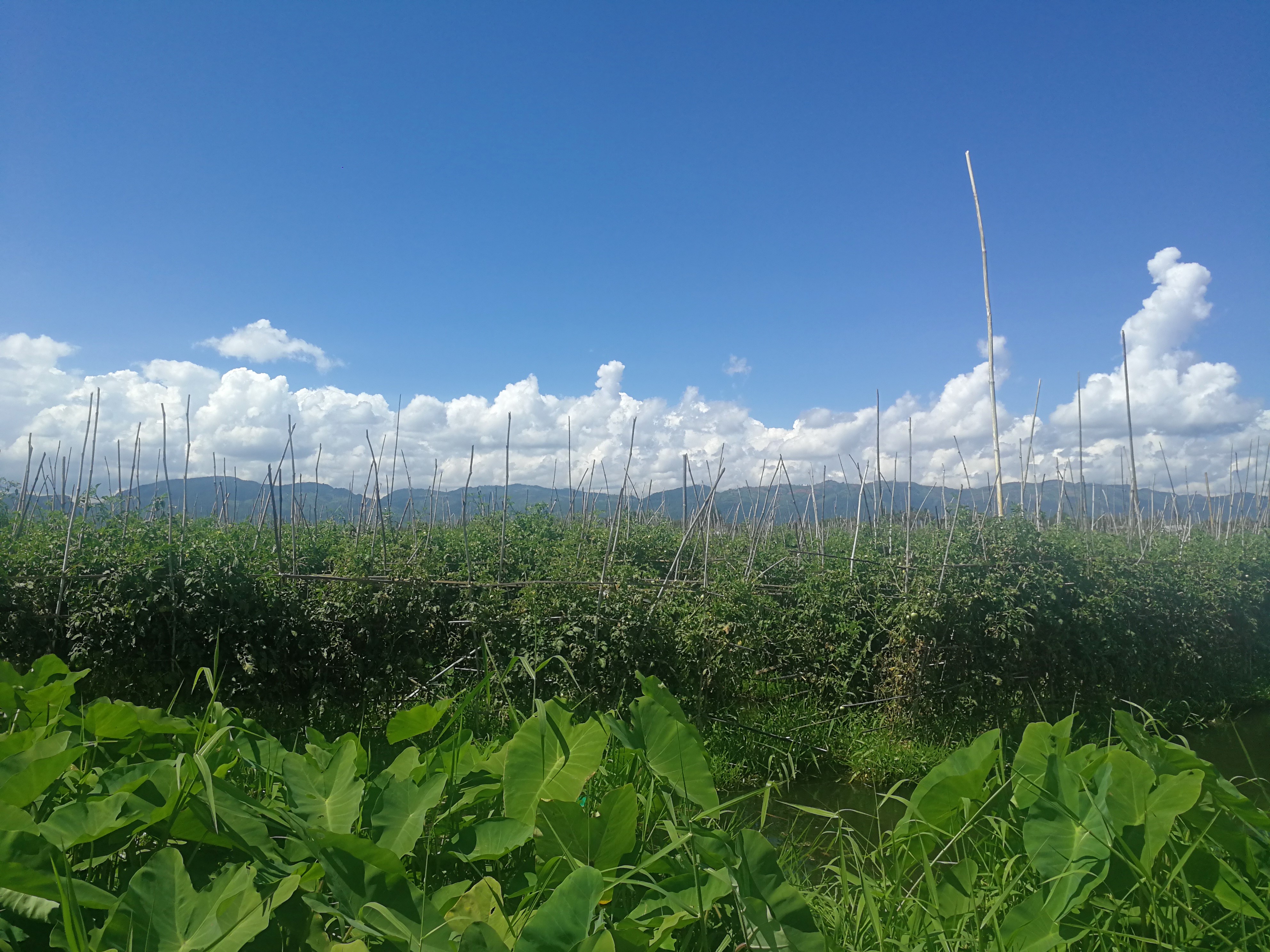
Heading back to Yangon in our car, I realise why I had such a troubled sleep during the night drive to Inle.
Part of the trip is through the mountains, and as mentioned, the driver sits in the right side as well as drives in the right side. Now, imagine a tired driver with a need for speed driving this road in the dark with other slower drivers to overtake.
Needless to say, I feel fortunate to be able to write this article about my trip to Bagan and Inle.



